Peter Martin, Vice Chair Bromley Civic Society, writes about the Royal Bell Hotel. This story appeared in our September newsletter. With thanks to Jo Hone for the photographs.
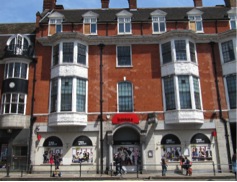 The Royal Bell has stood empty and forlorn now for some 5 years. Once the grandest hotel in Bromley, its most recent history has been somewhat chequered – as a troublesome nightclub (the horrible red plastic ‘Bromleys’ sign is still over the door), before that the ‘Sky Bar’ and before that a rather down at heel pub. Many will remember it as a Bernie Inn where you could get an excellent roast dinner in the large hall on the first floor at the back.
The Royal Bell has stood empty and forlorn now for some 5 years. Once the grandest hotel in Bromley, its most recent history has been somewhat chequered – as a troublesome nightclub (the horrible red plastic ‘Bromleys’ sign is still over the door), before that the ‘Sky Bar’ and before that a rather down at heel pub. Many will remember it as a Bernie Inn where you could get an excellent roast dinner in the large hall on the first floor at the back.
A group of people came together in 2012 to see if anything could be done about the state of the building. We discovered a stalemate between British Land (owners) and Spirit Group (leaseholders) that seemed destined to keep the building empty for the next 20yrs.
The Bromley Arts and Community Initiative (BACI) was formed to look at ways of re-opening the building as a venue for theatre and music along with arts workshops and community rooms supported by a commercially run café/pub on the ground floor. The Heritage Lottery Fund’s Heritage Enterprise scheme, it was hoped, could provide significant funding. Bromley Council and the Social Investment Business helped towards feasibility studies.
The Royal Bell dates from 1898 and is Grade II listed and was designed by Ernest Newton, an important Arts and Crafts architect and Bickley resident. It replaced an earlier hotel on the site that was one of three important coaching inns that were the mainstay of the local economy throughout the Victorian era. Bromley was a convenient stop on the road to the coast where travellers rested or changed horses for the onward journey. Jane Austen may have stayed in the Bell as she famously refers to it in ‘Pride and Prejudice’. It was granted the prefix ‘Royal’ when it was appointed as a posting house to Queen Victoria, after which royal coaches would change horses there. On these occasions stablehands were required to put on scarlet uniforms.
When seen from the High Street it is obvious that the Royal Bell was designed as a group, including No 175 near the Market Square and the former Martins Bank, now William Hill (spot the ‘M’ in the roundels on the black lead-covered bows).
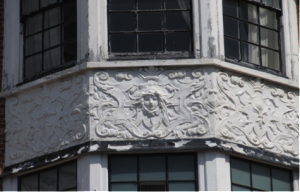 A distinctive feature is the white painted pargetted strapwork under the bow windows, with its Arts and Crafts lettering and depictions of bells, gremlins and nymphs. The white paint has probably preserved the pargetting in good condition – originally it would have been bare plaster, dark brown in colour (see photo). Newton clearly hoped that this would be the beginning of a grander High Street but it was not to be; to the north past no.181, the older Kentish cottages still remain.
A distinctive feature is the white painted pargetted strapwork under the bow windows, with its Arts and Crafts lettering and depictions of bells, gremlins and nymphs. The white paint has probably preserved the pargetting in good condition – originally it would have been bare plaster, dark brown in colour (see photo). Newton clearly hoped that this would be the beginning of a grander High Street but it was not to be; to the north past no.181, the older Kentish cottages still remain.
The 1920s photo shows a glass covered canopy over the front door adorned with signs. It is no longer there of course but during the condition survey, a piece of stained glass with the letters RB was discovered on the floor of the stables at the rear. Could this be the remains of the canopy? The 1920s photo also shows shopfronts inserted in the frontage. This is something that could be considered again as a means of improving the viability of the building as a whole.
 Inside, Newton provided a grand ballroom on the first floor with a gallery and characteristic chimneypiece. These are still there but a large hole has been carved in the floor of the ballroom (in the 1980’s?) to allow for a curved staircase to be inserted (since removed). The first floor rooms in the front overlooking the High Street have original chimneypieces and decorative ceiling still intact.
Inside, Newton provided a grand ballroom on the first floor with a gallery and characteristic chimneypiece. These are still there but a large hole has been carved in the floor of the ballroom (in the 1980’s?) to allow for a curved staircase to be inserted (since removed). The first floor rooms in the front overlooking the High Street have original chimneypieces and decorative ceiling still intact.
During the condition survey commissioned by BACI some asbestos, dry rot and water ingress in two places were found (the leaseholders have since dealt with these problems). A large range of further repairs and adaptations were costed – including installation of disabled lifts and bridging over the floor of the ballroom to enable its use as a venue for music and theatre. The complexity and total cost proved too much for a voluntary organisation to handle without a commercial partner.
In 2014 we heard that Antic Ltd had taken a lease on the Royal Bell. Antic are a pub company that have rescued several historic buildings in south London and they seem an ideal company to tackle the Royal Bell, albeit not as we originally envisaged. Antic have carried out a sympathetic refurbishment of the Railway Tavern opposite Bromley North Station and the pub now seems to be operating successfully. Anthony Thomas, the Chief Executive of Antic has said his approach to refurbishment is ‘slowly, slowly’ and it may be years before the building is fully operational. He is open to suggestions about arts activities in the Royal Bell and has included the showing of films in a mini arts cinema in the stables building at the rear. In August, he said that they were still awaiting the completion of the lease, they hope to conclude next month… and soon thereafter make a start on works.
Watch that space!

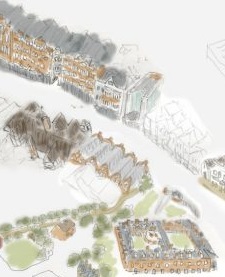
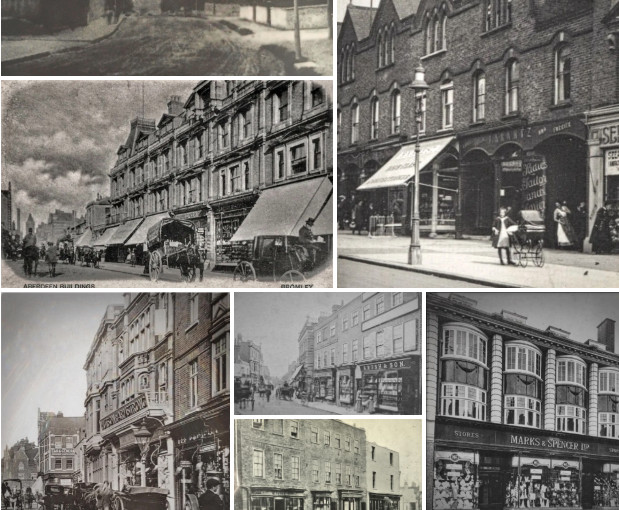 Browse our old photos, in
Browse our old photos, in 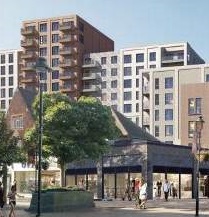 from being dominated by tower blocks: Look here and email our ward councillors about:
*
from being dominated by tower blocks: Look here and email our ward councillors about:
*